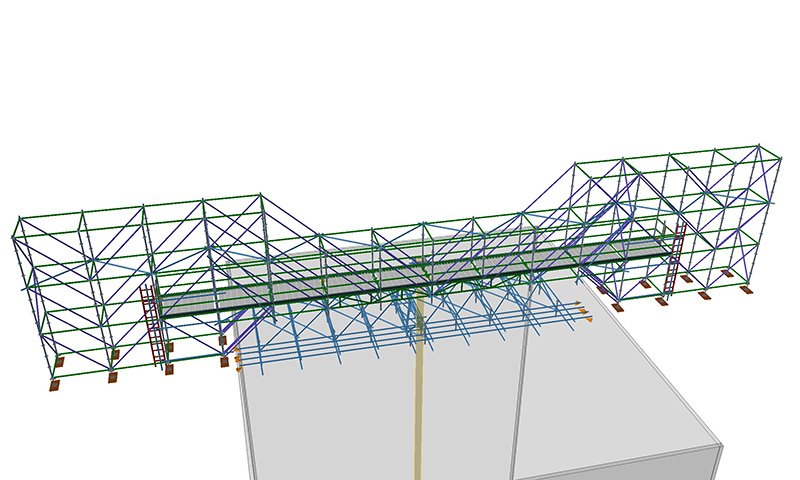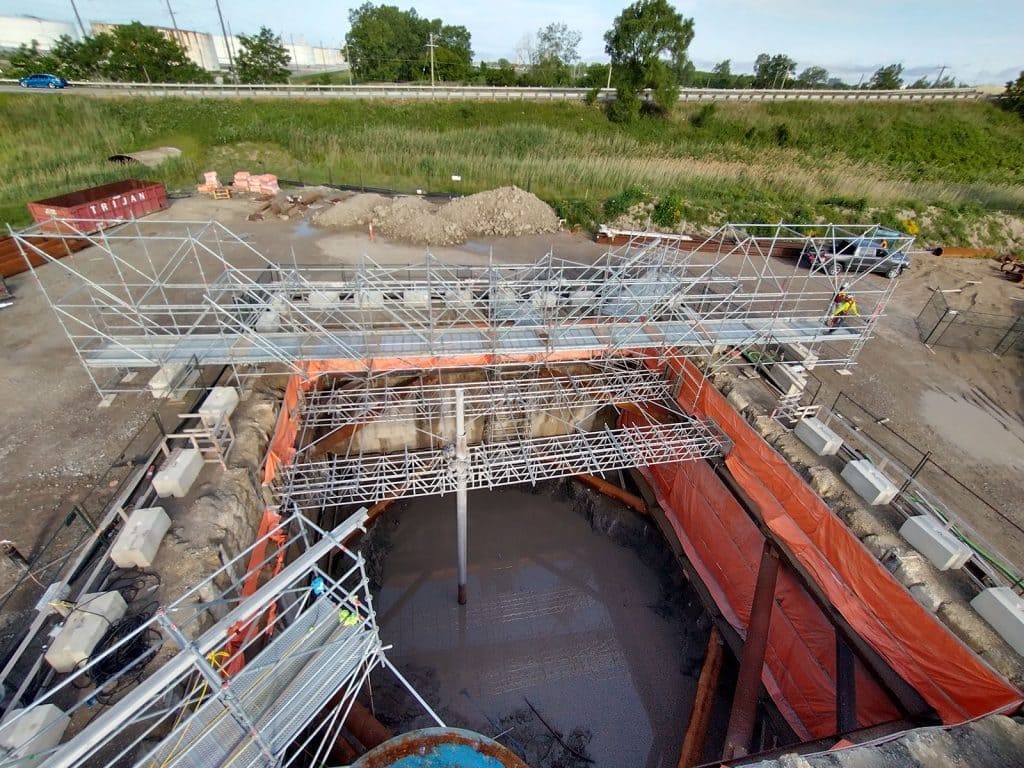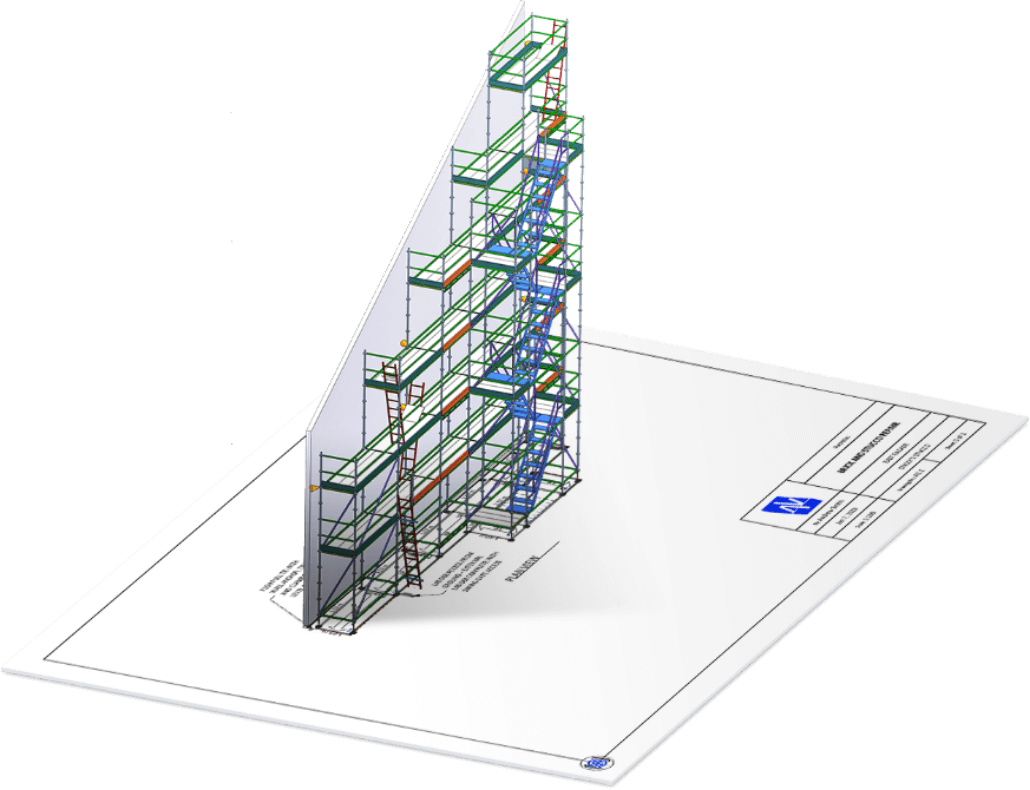
Design

Reality
By designing our concepts in Designer we were able to demonstrate exactly the concepts in a visual presentation that the client could understand and appreciate.
Brandon Marton
Director of Business Development
Scaffolding is all about providing access to hard-to-reach places. Brandon Marton, Director of Business Development at Hinton Scaffold in Canada, is no stranger to this, having addressed many challenging access needs over the years.
He and his colleagues were confronted with an exceptionally difficult task when the company was approached to provide access that would allow crew members to install a vertical sleeve on an open pit.
The project required a drilling company to plug a leak that had been identified during an excavation. The pit spanned 60 feet across and was approximately 50 feet in depth when they hit a water source. Plus, the vertical sleeve they intended to put in place needed bracing that would not interfere with ongoing works.
Not only was it a major feat to span a 60-foot opening with no anchor points, but the free-floating pipe also needed to be shored up against a 30kN impact. They had to create an innovative solution to provide access across the pit quickly.
Marton and his colleagues decided that the only way for the workers to access the vertical pipe sleeve was to build a custom-designed pedestrian-style scaffold bridge to get the crew over to where they were required.
Omar Miller, lead designer for the company, spearheaded the unique deployment of the project. He came up with a design for the bridge using system-style scaffold materials instead of having to order or manufacture special bridging steel.
Once they came up with the solution, they needed to present it clearly to the client. At first, it was difficult for the client to comprehend the company’s new custom-designed and complex scaffold concept.
Marton said, “There was a lot happening on the fly for this project. The city, prime and sub-contractors needed a scaffold company that could turn around answers and design fast. It was difficult for anyone to understand when you are presenting a new custom designed concept with scaffolding, and even the engineers had challenges to comprehend the vision.”
Using Avontus Designer mitigated the delays that are typical in traditional scaffolding design methods. The detailed 3D visuals also enabled the Hinton Scaffold team to have in-depth discussions with the client and make changes on the fly to satisfy the project requirements, despite working within a tight deadline.
Marton said, “By designing our concepts in Designer we were able to demonstrate exactly the concepts in a visual presentation that the client could understand and appreciate.”


